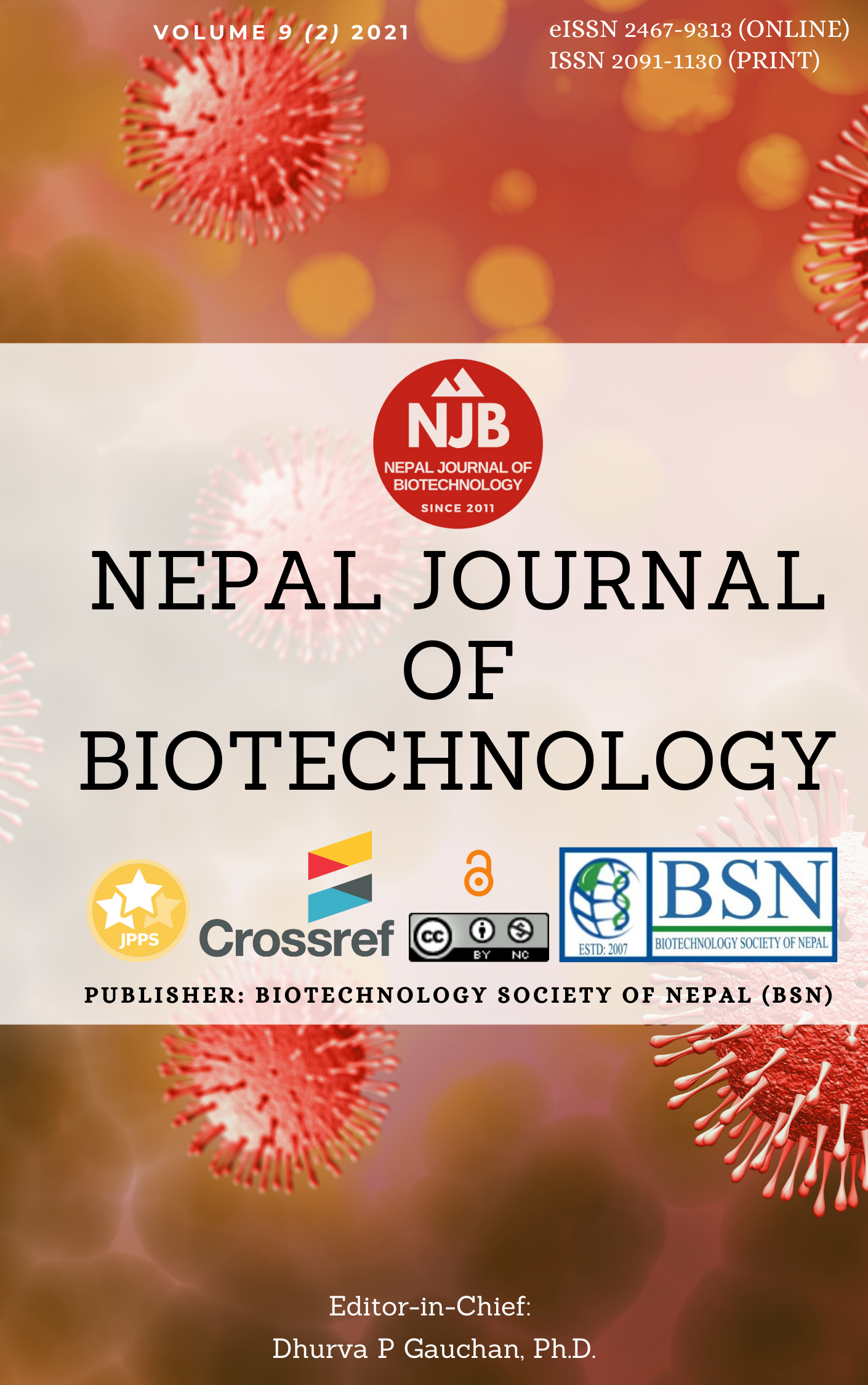Microbial and Physico-Chemical Quality Assessment of Rivers of Kathmandu Valley
Keywords:
E. coli, Bagmati, Physico-chemical parameters, Antibiotic Susceptibility, Most Probable Number methodAbstract
Water quality refers to the chemical, physical, biological characteristics of water. It is a measure of condition of water relative to requirement of one or more biotic species and or to any human need or purpose. The main objective of the study is to detect the physio-chemical and microbiological parameters of water sample from the Bagmati river and its tributaries of Kathmandu valley along with antibiotic susceptibility. In physico-chemical parameters, turbidity, temperature, pH, Electrical conductivity, Dissolved Oxygen, Biological Oxygen Demand, Ammonia, Alkalinity, Hardness, Chloride, Phosphate, Iron, Nitrate, Total Dissolved solids, and color were analyzed. Iron and Turbidity was found to be above the World health organization and Nepal Standard guideline in all the samples (100%), while Ammonia was found to be above the WHO guideline in 10(90%) samples. Among 11 samples, 10(90%) showed a low Dissolved oxygen level. Most Probable Number method was followed for counting total load of coliform and fecal coliform. Escherichia coli was isolated from the sample and subjected to Antibiotic susceptibility. Coliform was detected in all the samples and E. coli was identified as highly resistant towards Gentamicin (81.8%) and sensitive towards Chloramphenicol (81.8%). High value of ammonia, turbidity and low value of Dissolved Oxygen in the lower belts of river was due to large inputs of wastewater and organic loads caused by anthropogenic activities. High value of Coliform in all the samples indicates bacterial contamination in river water. The comparative study for the water quality variables in the urban areas showed that the main rivers and its tributaries were equally polluted.
Downloads
Downloads
Published
How to Cite
Issue
Section
License
Copyright (c) 2021 Biotechnology Society of Nepal

This work is licensed under a Creative Commons Attribution-NonCommercial 4.0 International License.
Copyright Notice:
The manuscript submitted to NJB must be an original contribution, not previously published and should not be under consideration for publication elsewhere. When the manuscript is accepted for publication, the authors agree to automatically transfer the copyright of the article to the publisher. It should grant permission to any third party, in advance and in perpetuity, the right to use, reproduce or disseminate your article, according to the NJB copyright and license agreement.
Authors transfer copyright to the publisher as part of a journal publishing agreement but have the rights to: Share their article for Personal Use, Internal Institutional Use and Scholarly Sharing purposes, with the NJB applies the Creative Commons Attribution-NonCommercial CC BY-NC license to all the works we publish after Jun 2020 (Before it was CC BY-NC-ND). Under this license, authors agree to make articles legally available for reuse, without permission or fees, for virtually any non-commercial purpose. Anyone may remix, adapt, and build upon your work non-commercially, and although their new works must also acknowledge you and be non-commercial, they don’t have to license their derivative works on the same terms. More details on CC BY-NC refer to its Licence Deed and Legal Code.






